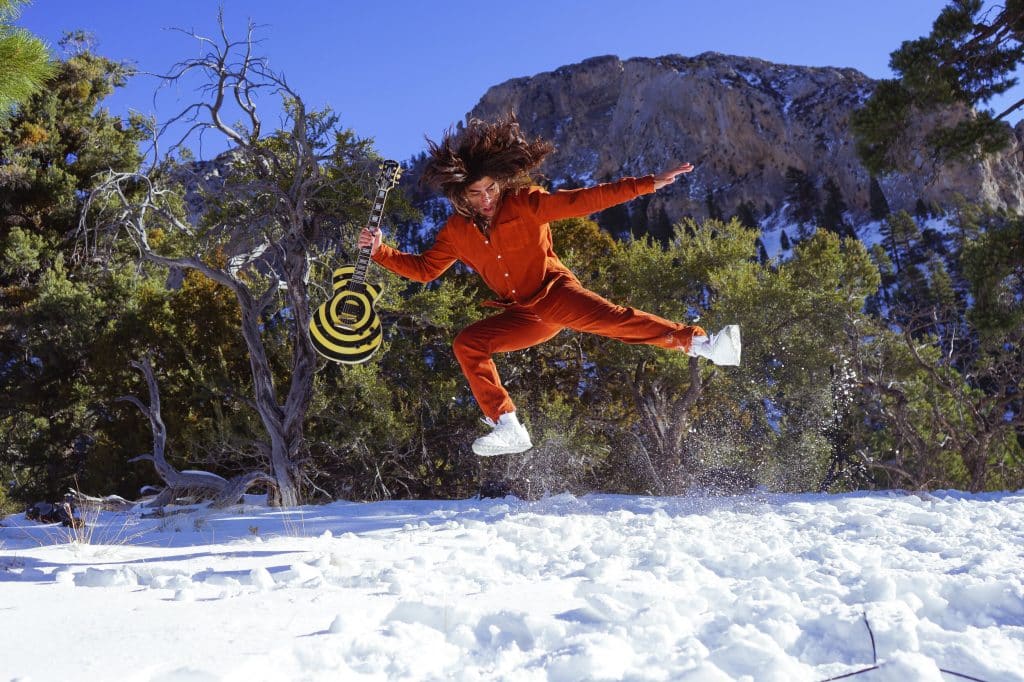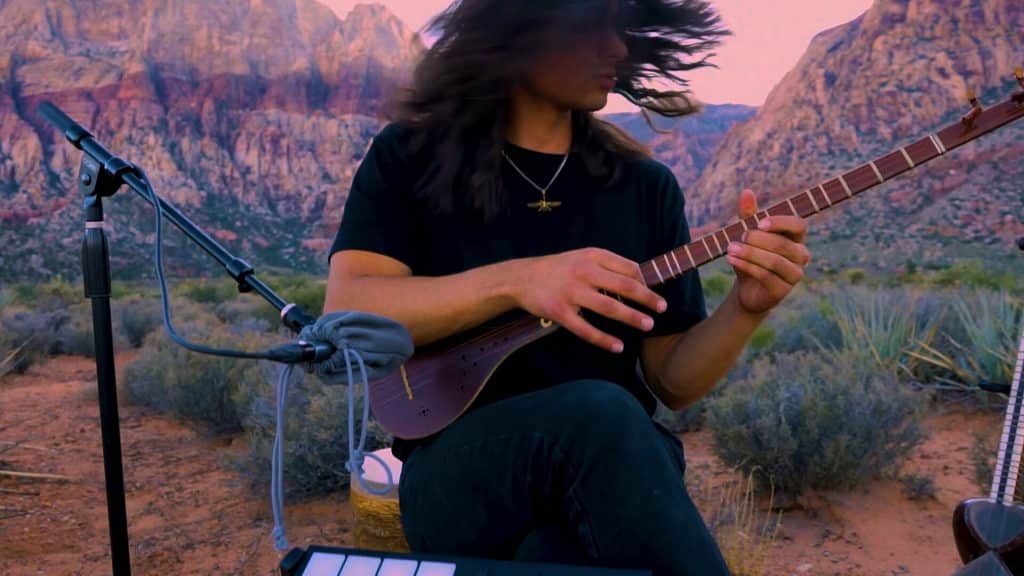Danny Asadi’s Vital Guide to Persian Entice Music
Danny Asadi pioneers Persian trap music; consequently, he marks the genre with its uniqueness.That is to say, he grew up in Ohio, with influences from US electronic, hip-hop, and Iranian music. Moreover, Asadi’s innovative approach blends Persian folk elements with EDM and hip-hop, creating captivating music. He masters traditional Iranian instruments like the setar. In addition, he incorporates modern production and drum pads into his high-energy live performances.
After that, this fusion creates dynamic and electrifying shows. Similarly, skillfully, he combines his Red Bull 60, Second Solo, with 21st-century technology. In other words, he marries it with a centuries-old stringed setar.
In conclusion, a cinematic, East-meets-West thread runs through Asadi’s beautiful visuals too, locating ultra-modern-day. Above all, Asadi’s perspective revolves around his ‘in-between’ identity—American-born with Iranian heritage, not entirely Eastern or Western. Therefore, with Persian Trap, he isn’t just acknowledging this sense, but embracing and harnessing it to create something totally clean.kits in historic, stunning landscapes alongside traditional folks units; a striking metaphor for his sound and complete ethos.

Danny Asadi
A Middle Eastern method to digital song BY Danny Asadi
“It’s a fashion I evolved once I was around 15 or sixteen years vintage – I started gambling Persian devices and additionally vibing with entice music, that’s Persian Trap at its core,”
Asadi explains of the sound’s origins, and mixing the traditional and modern-day from the start of his musical journey. “It’s a more cinematic, ethnic Middle Eastern-inspired approach to electronic and dad music. The music’s futuristic aspect and technology surprised me. You can create beautiful sounds worldwide, all on your computer.
I cherished that concept. And drum machines, triggering something you want. At the same time, I become uncovered to conventional
Persian folk song and my dad got here lower back from Iran with a Persian setar – the first Persian instrument I discovered to play.”
Danny Asadi “I knew it became feasible.”
Soon, he began using other Persian instruments and his first drum gadget while figuring out how to use these seemingly unique elements to play live.
“I simply loved the concept that in preference to DJing I’d play the whole lot live.
“People immediately up informed me it turned into to area of interest and not sufficient people would be into it.
Or that it was nearly not possible to play digital track stay – on the time there were no acts like Disclosure, it changed into all DJing on the time – so people just failed to see it. But I knew it was feasible.”

Danny Asadi
Bringing Persian subculture Westside
Danny Asadi says he was inspired by way of an eclectic mix of contemporary elements, in addition to the Iranian impacts when developing
Persian Trap: “I cherished the massive-scale grand factors of announcing Swedish House Mafia, I loved the dirty analog, minimal, nearly nostalgic electronic elements of
Pretty Lights, on the EDM facet I freaking loved the clean bass-heavy trap elements of Baauer.
“My typical purpose is to bring Persian culture and artwork, popular Middle Eastern subculture, Westside.
I assume there was a time when people lacked enthusiasm for learning Middle Eastern music, melodies, and compositions, but now, more than ever, they are prepared.
” “There are many factors in traditional Persian music that date back centuries.”
which are unprecedented in mainstream song, in particular melodies,” Danny Asadi explains. “In Persian tune, 90 percent of its far harmonic minor, but the way the one’s notes are articulated is lots unique than, say, in the US.
There’s a way of playing violin for example that’s wonderful to Persians – the manner they play the violin is so specific from the manner Americans play it. Just the way melodies are hit.”
He speaks from actual on-the-ground experience too, having traveled to Iran and experiencing pivotal musical moments in his lifestyle, getting to know Persian setar from a teacher there.

